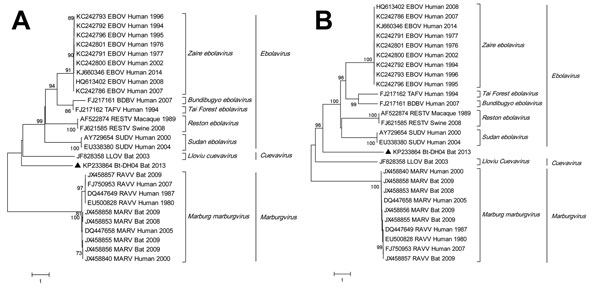Volume 21, Number 9—September 2015
Letter
Filovirus RNA in Fruit Bats, China
Figure

Figure. Phylogenetic analysis of 2 fragments of filovirus Bt-DH04 and other filoviruses. Full genomes of representatives from the family Filoviridae were trimmed and aligned with F1 (partial nucleoprotein/viral protein 35 gene, panel A) and F2 (middle L gene, panel B) of filovirus strain Bt-DH04 by using ClustalW version 2.0 (http://www.clustal.org), then phylogenetically analyzed by using MEGA6 (http://www.megasoftware.net) by the maximum-likelihood method, resulting in a bootstrap testing value of 1,000. Sequences are listed by their GenBank accession numbers, followed by the virus name, host, and collection time. Triangles identify the novel filovirus strain Bt-DH04 (China). Scale bars indicate nucleotide substitutions per site.
1These authors contributed equally to this article.